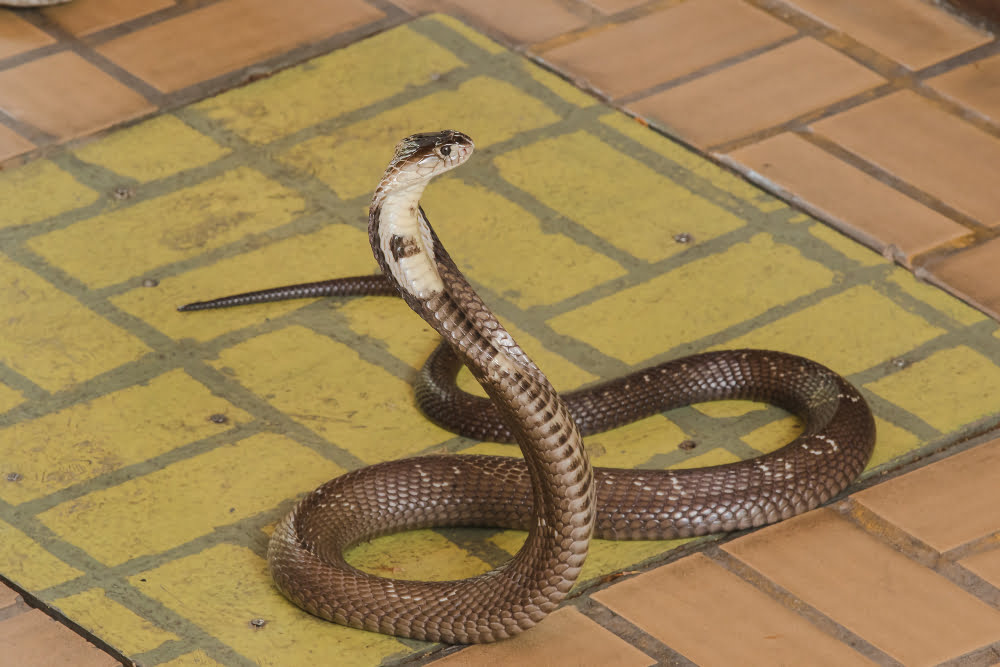Last updated on
Encounters with wildlife can be both awe-inspiring and daunting, especially when animals venture into our living spaces. As urban sprawl continues and wild habitats shrink, such encounters are becoming increasingly common. This situation necessitates a calm, informed approach to ensure safety for both humans and animals.
In this guide, we’ll explore practical steps to take when a wild animal enters your home or property, covering initial reactions, preventive measures, and when to seek professional help. Whether it’s a raccoon in the attic or a snake in the garage, knowing how to handle these situations can minimize risk and lead to a safe resolution for all parties involved.
Stay Calm and Assess the Situation

When you first notice a wild animal in your vicinity, it is crucial to remain calm. Panic can lead to hasty decisions that may exacerbate the situation. Take a moment to assess the type of animal, its behavior, and whether it poses an immediate threat to you or your family. Understanding the specific animal’s behavior can give insight into whether it’s likely to flee or become aggressive when cornered.
Observe the situation from a safe distance. If the animal has not noticed you, it may exit on its own. Keep in mind that most wild animals prefer avoiding human interaction. They often enter homes accidentally and are looking for a way out. In these moments, avoid sudden movements or loud noises that may startle the creature.
As noted by HamiltonWildlife.ca, raccoons, for example, known for their intelligence and dexterity, can often become unwelcome visitors in urban and suburban settings. That’s why it’s essential to assess the situation and determine an appropriate course of action.
Secure Your Space
Safety should be your next priority. Secure any pets in a separate room to prevent them from interacting with the wild animal. Close interior doors to limit the animal’s access to other parts of your home, but try to provide an obvious exit route where possible. If the animal is in a room with a door to the outside, open the door and remove yourself from the area—there’s a good chance the animal will leave the same way it came in.
If the situation permits, try to isolate the animal within a contained space. This could involve gently herding the animal toward an area where it can’t do much damage or pose a threat. Use caution and maintain a safe distance at all times, bearing in mind that an animal’s behavior can be unpredictable when it feels trapped.
Do Not Attempt to Touch or Capture

It cannot be stressed enough: attempting to touch or capture a wild animal is dangerous and can result in injury or the transmission of diseases. Wild animals, even those that appear tame or injured, are unpredictable and present risks such as biting or scratching. They are also likely carriers of zoonotic diseases like rabies or bacterial infections.
In addition to personal safety risks, capturing an animal might also be illegal depending on local wildlife protection laws. If you feel the situation requires the animal to be removed, contact professional wildlife control services who are trained and licensed to handle such scenarios safely and legally. They can ensure the safe capture and relocation of the animal without harm to it or anyone in the home.
Preventing Future Incursions
After dealing with an immediate encounter, take proactive measures to prevent future visits. Inspect your home for potential entry points such as broken screens, vents, gaps under doors, or holes in exterior walls. Seal these access points with appropriate materials, keeping in mind that some animals can gnaw through certain barriers.
Regular maintenance around the property is also key. Keep trash cans sealed and avoid leaving food outdoors, as this can attract wildlife. Consider installing motion-activated lights or using natural repellents to deter animals from your property. Encouraging a wildlife-free zone doesn’t mean harming the animals; it means making your living space less appealing or accessible to them.
When to Call in the Experts
There are scenarios where professional assistance is essential. If you encounter a potentially dangerous or protected animal, such as a bear, venomous snake, or any animal that appears sick or erratic in behavior, keep a safe distance and contact local wildlife authorities or a professional animal removal service. These encounters can have serious consequences if mishandled and are best left to experts.
Professional services are also invaluable in assessing wildlife risks around your home and recommending customized solutions. They can provide the peace of mind that comes from knowing your home is not only secure from wildlife entry but also that any animals found on your property will be treated humanely and by local laws. Whenever in doubt, err on the side of caution and seek professional advice.
Coexisting with wildlife requires a balance of vigilance, respect for nature, and understanding of the laws and behaviors governing the animals we may encounter. By staying calm, securing your space, respecting the wildness of these creatures, taking preventative measures, and knowing when to call in experts, you can manage unexpected wildlife encounters safely and responsibly.
Protecting both our families and the natural fauna is crucial as we live side by side. Remember, wildlife intrusions are most often unintentional, and with a little knowledge and preparation, we can ensure these rare occurrences end safely for all involved.
Recap:



